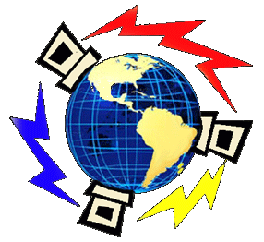Tips and Performance:
- Use Quick Launch instead of Desktop Shortcut Icons: right-click the Taskbar, go to Toolbars, make sure Quick Launch is checked and drag favorite shortcuts to the Quick Launch bar.
- Speed up Windows interface: Go to the Start Menu, right-click on My Computer and click Properties, go to the Advanced tab and go to Setting under the Performance section, check only Smooth Edges of Screen fonts, Use Common Tasks in Folders, Use Drop Shadows for Icon Labels on the Desktop, and Use Visual Styles on Windows and Buttons. For maximum performace uncheck everything for Windows Classic view and don't use a Desktop Wallpaper.
- Download Bootvis from any trusted website found when you can google it. Click the trace menu, and select the Next Boot option. Click OK in the dialog box that pops up and restart. Run Bootvis again then click the trace menu and choose Optimize System, it will restart again and bootvis will optimize the start-up process.
- See your icons faster, go to My Computer, click on Tools and select Folder Options, select the View tab and uncheck the very first box that reads, "Automatically search for network folders and printers." Check "Launch folder windows in a separate process" so you can open a new Windows Explorer when Explorer crashes. When it crashes, just press Contol+Alt+Delete and select File, New Task and type explorer.exe. Check "Do not cache thumbnails" to speed up seeing icons. Click apply and restart.
- Free up some Hard drive space, right-click the Recycle Bin and click Properties. Go to your hard drive and set the Recycle Bin to 1% of your drive to free up some space. Also go to Start, right-click My Computer then to System Restore, click on your hard drive and click settings and also set it to 1% to free up more space.
- Delete MSN Explorer under Add/Remove Programs if you don't use it.
- If you don't like the sounds Windows makes when Startup and Shutdown, go to Control Panel, Sounds and unclick the sounds that annoy you the most.
- If you have unused hardware like a dial-up modem, go to Run, type devmgmt.msc and disable any unused hardware for quicker boot times.
- Make sure you have Adobe Reader, the latest Flash Player update, and Java so you can play and see everything on the internet websites, espcially java updates are a must these days.
There has been a great fuss recently with Sun's Acknowledged Security Hole in Patch Process previous Java platforms that might be running from Windows directory that do not get removed when a newer version is released and downloaded. So, in theory, a malicious site could simply render Java content under older, vulnerable versions of Sun's software if the user has not removed them.
- Sun says this issue can occur with the following Java versions:
- Java Plug-In included with J2SE 5.0 Update 5 and earlier, 1.4.x, 1.3.1, and 1.3.0_02 and later
- Java Web Start included with J2SE 5.0 Update 5 and earlier, and 1.4.2
- Java Web Start 1.2, 1.0.2, 1.0.1, and 1.0
Maintenance
- Visit windows update website regularly for patches and software updates and downlaod all Service Packs. Visit once a month.
- Defragment your hard drive regularly once a month. To start Defrag, right click your hard drive in My Computer, select Properties, go to the Tools tab, and then Click Defrag. You can also access Defrag from the start menu, All Programs, Accessories, and System Tools.
- Use a constant updates Anti Virues program such as McAfee or Kaspersky, or a free version of Avast. Run the program once a week.
- Always enable Windows Firewall for internet security. Go to Start and Control Panel then Security Center, turn Firewall and Automatic updates on and a self-monitoring Anti Virus program.
- Detect and delete spyware and adware. Download Windows Defender from Microsoft and search for spyware. Run it everyday or once a week depending on how much you are browsing online.
- Delete contents in your prefetch folder to remove outdated entries. Go to My Computer, then your hard drive C:, then Windows, Prefetch folder and delete all the files inside the folder. Do this once a month.
- Empty the Recylce Bin everyday, right-click on the Recycle Bin and Empty Recycle Bin. Empty once a day.
- Cleanup cookies and Temporary Internet Files from Internet Explorer: go to Tools, Internet Options and Delete Cookies, Delete Files and Offline Content, Clear History and finally go to Settings and make the Temporary Internet Files Folder to about 5-10MB space. Click OK. Do this and Disc Cleanup everyday or once a week depending on your online usage.
- Delete anything in the Startup folder under the Start Menu and All Programs.
